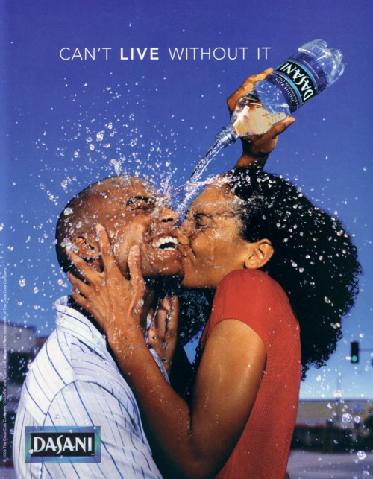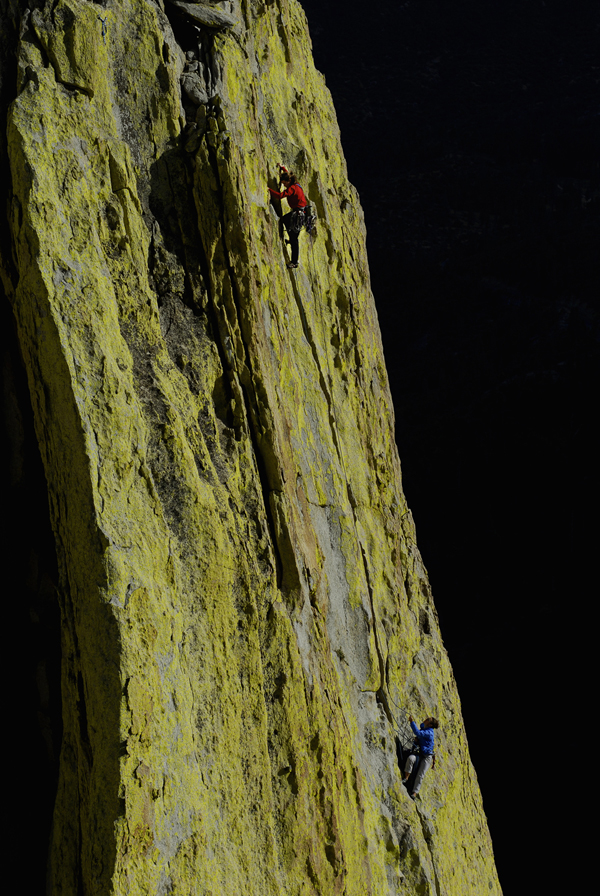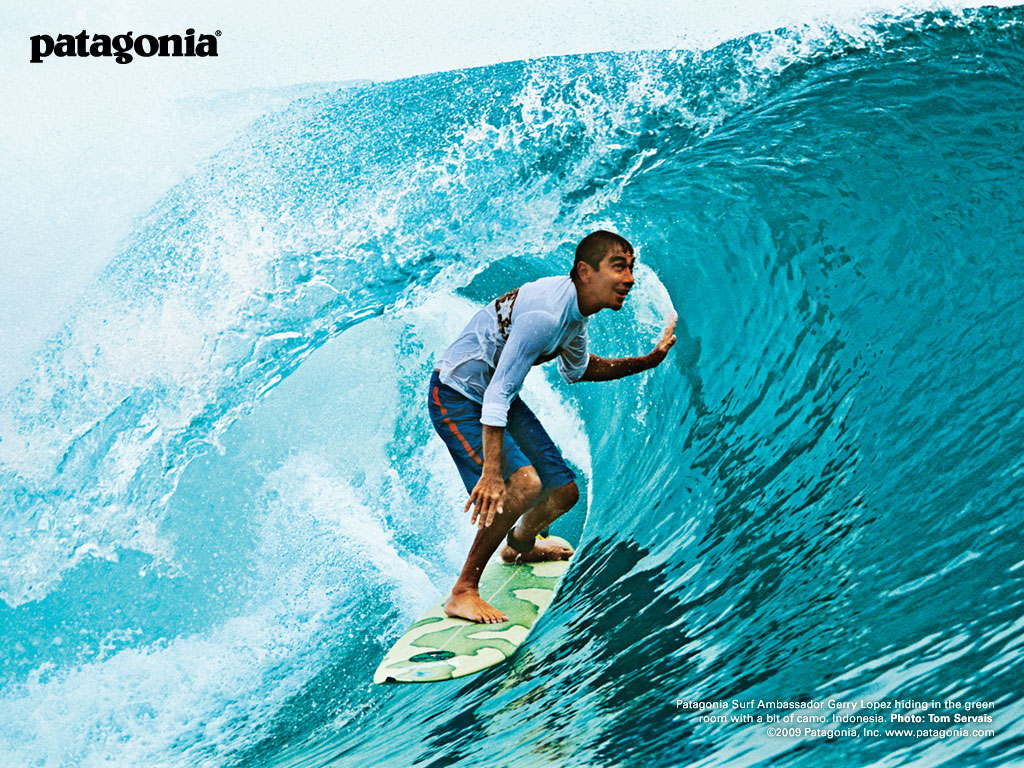Summer Slack-Off 3: How to Have Fun
August 30, 2009
Over the years, I’ve done a lot of things that are fun — so many things, that the list of the fun things I “used to do” is getting depressingly long. Here are a few.
Playing a musical instrument
Writing music
Surfing
Whitewater kayaking
Flatwater canoeing, including multi-day expeditions
Sea kayaking
Rock climbing
Alpine skiing
Backcountry skiing
Nordic skiing
Ultralight backpacking
DIY audio
Homebrewing beer
Reading books
Writing books
Writing a website
Writing for other websites/publications
Starting a business (or two or three)
Traveling to numerous foreign countries
Living in a foreign country
Learning a foreign language
Most of these things, I did for several years and reached an advanced or expert level. All of these were lots of fun.
It seems to me that a lot of people literally don’t know how to have fun. They are perpetually fun-starved. They look for things that are fun, but never seem to find anything.
Over time, I’ve come to appreciate the Golden Rule of Having Fun. Here it is:
Things that are Fun are Not Marketed
Things that are Marketed are Not Fun
Look at the list above. There are certain common characteriestics:
1) They are not marketed. There’s no money in them, so there’s no money in a budget to pay for advertising, beyond the “hobby enthusiast” level.
2) They are multi-year engagements. You can’t just go surfing for “a weekend” and accomplish much, if you have never done it before. You have to go over and over, for months and years.
3) There is a process of mastery. They are often not that much fun when you start. Ever try to play a violin?
4) They are basically cheap.
Lots of things are marketed as if they are fun. Let’s list a few:
Drinking Coke
Owning this year’s “it” handbag
Sitting on a beach in the tropics
Disneyland
Las Vegas
Driving a luxury car
Owning a vacation home
Maybe you’ve done a few of these yourself. There can be some satisfaction in them. But are they fun?
This year, I made a trip to Quebec to go kayaking on the Taureau section of the Jacques Cartier river. The Taureau is considered one of the premier expert whitewater runs of the entire Northeast.
It was a ton of fun.
By happenstance, I managed to meet up with some college buddies of mine, who I used to kayak with many years ago. One of them has been making regular Taureau trips over the years, and served as our guide. Another stopped kayaking back in 1998, but his skill base was so vast that he was able to do a demanding expert wilderness run right off the couch. (That was amazing.) So, it was something of a college reunion tour on top of a whitewater trip.
The night before our run, we were camped out on the banks of the Jacques Cartier. Dinner consisted of a can of Dinty Moore Beef Stew mixed with a can of beans, cooked over a campfire. Craig (doctor), Rich (lawyer for a big private equity firm) and I all agreed: it was dirtbag heaven!
That was fun too.
The Taureau is one of the longest whitewater runs in the East — six hours of continuous movement. (My first run, several years ago, took eleven hours.) By the end, we were wasted. On the drive out, over the narrow, 20-mile dirt road back to civilization, we smoked cigars, drank beer and listened to Johnny Cash on the car stereo. (Nobody cares if you drink beer in a car in the outback of Quebec.) This is a powerful combination to a fatigue-addled mind. Completing a major adventure together also induces a wonderful masculine camaraderie. Sometimes I think the drive out is the best part of the trip.
Fun.
All in all, it was probably the most fun thing I’ll do this year.
You’ll never see an advertisement for the Taureau. Until a few years ago, you couldn’t even find a description of the river in English. It was a legend passed down by word of mouth.
If you look at the list of things that are marketed as fun, but really aren’t, there are also some commonalities:
1) They are expensive. Typically, the more expensive they are, the more fun they are supposed to be.
2) They demand no skill set.
3) They typically take place in a corporate-controlled, manufactured environment.
4) They are one-time amusements, not multi-year engagements. Most are not worth doing more than three or four times. You can “do it” the first time.
5) Many are simply forms of shopping.

This “Dasani” stuff sure looks like fun.
If you pour it on your head, the chicks go wild!
CAN’T LIVE WITHOUT IT!
(Dasani is Coca-Cola’s name for purified tap water.)

Yellow Brick Road (5.9+), the Needles, California
This is what real fun looks like. And absolutely free. So, there’s no money for a marketing budget.
You can’t “buy” this experience at any price, but a San Francisco office worker can easily get there if they stick with it for a few years.
I think a lot of people try to get their ideas of fun from marketing. They see an advertisement for something, and try it … and it is sort of fun … I guess … but maybe this other thing they are being marketed would be better. So they try that. After a couple decades of this, they wonder why they never have any real fun.
Travel and tourism is a big nexus of fake fun. Sometimes travel can be … not quite fun … but interesting. The most interesting travel trips I’ve been on are dirtbag backpack-tourist trips, outside of the developed economies. The second most interesting travel trips are business trips. Typical comfy-hotel vacation trips are by far the least interesting (and most expensive). Guess which has the most marketing.
Travel is best done when combined with some pursuit or plan. Going to Quebec to kayak is fun. Going to Quebec to explore the ruins of colonial-era forts and old battlegrounds might be fun, if you are into that sort of thing. Going to Quebec to look at random things from the window of your rental car is a waste of time.
A vacation home must be the ultimate in phoney-fun. Owning and furnishing and taking care of a house is a pain in the ass — consuming time and energy that could be used to have real fun. Owning two or more houses, especially when you are trying to manage them from a distance, depletes the fun budget still further. OK, then you go to your vacation house two weeks a year. Finally, you get the payoff for all these extra chores. Maybe that’s fun. However, there’s a catch: you have to go to the same place every year. Which could get a little dull. For this we pay $300,000+?
The marketing for vacation houses is intense. In vacation-centric areas, there is a whole industry devoted to selling you property. There’s a lot of money in it — your $300,000+, to be exact. It might be the biggest industry in that area. A monumental effort is expended in making you think that second home ownership — hyperconsumption — is some sort of worthwhile pursuit. Because you would never come to that conclusion on your own.
On your own, you would conclude that it is a lot easier just to stay at a hotel. They take care of everything, from making the bed to washing the towels. Even at $400 a night, for two weeks a year (14x $400=$5,600), that still might be less than the property taxes on your vacation McMansion.
I think that one reason people keep doing this stuff over and over, is that they perhaps have never experienced real fun. They don’t know how to do it, and it seems like there’s nobody to show them how (because there’s no marketing). Or, maybe they just watch too much TV. For a lot of people, things that are not on TV don’t exist. Literally.
When is the last time you saw anyone ultralight backpacking on TV? Maybe that’s why, when I take a multi-day trip to the Bear Mountain/Harriman area only 20 miles north of New York City (with train and bus access from Manhattan) — which I think is a marvelous place to walk around and camp — I have the whole place to myself. (I have never seen one single other ultralight backpacker in that park.)
Sometimes there is overlap between things that are real fun and phony marketing fun, as is the case for alpine skiing. Alpine skiing, because it is so location-dependent, supports an affiliated travel/real estate industry. Also, with snowmaking and grooming, it is something that people can have fun with “Disneyland-style,” in their first weekend, as an amusement, unlike most outdoor sports. I find that alpine skiing is best when it’s cheapest — living in mountain country with a $600 season ticket rather than a couple weekends here and there, driving from the city. But then, I was a backcountry skiier so I guess I would think that. There are two ways to have bottomless powder all to yourself: 1) Heli-skiing at $12,000 a week; 2) backcountry skiing for F-R-E-E. Over time, I’ve gotten tired of paying for lift tickets, and the general manufactured environment of alpine skiing areas, so I’m more likely to go snowshoeing these days. (After skiing waist-deep powder regularly in Japan, I haven’t mustered much interest for backcountry skiing in the Northeast.) So, the inverse relationship between money and fun persists even in the exception.
Sometimes fun is rather subtle. You can have fun knitting hats, or sitting on the beach with a picnic lunch, or painting watercolors. It doesn’t have to be that adventurous. Some people like to socialize and chase girls. This can be a timeless source of fun.
Fun activities, which involve real skills and a multi-year engagement, usually also involve like-minded participants. Your ski buddies. Or that group of homemade-sauerkraut-making enthusiasts. I once knew a guy from Texas who was part of a competitive barbecue team. They would weld together custom hotrod barbecues in their garage for that extra edge. (A Texas competition barbecue starts off as an empty 100lb propane tank.) Doing something with other people is fun. One thing that’s nice about outdoor sports is that income and social standing is almost completely irrelevant. People feel that they can finally “let down their guard.”
Most phony-fun is done alone. The Disneyland ride. If it required the interaction of strangers, it would probably be harder to sell.
A genuinely fun activity can eventually grow into an epic undertaking. Your first rock climbing efforts evolve into a six-month tour of North American climbing. Your bass fishing hobby can lead you to the competition circuit and eventual sponsorship by a maker of fishing rods, and later retirement as a fishing guide. Your housing bust blog can grow into a web-media icon. Phony-fun activities never go anywhere. What you see the first time around is the whole deal.
Since people have been trained that they have to spend money to have fun — hundreds and thousands of dollars — there is something of an instruction industry for things that are genuinely fun. People are unaccustomed to doing things outside of a structured, pay-as-you-go environment. You can get instruction in how to surf, for example. This can be OK, but you are usually better off the less money you spend. I learned how to surf purely through imitation. I learned how to ski that way too. The activity itself will tell you how to do it. (If you fall down — don’t do that.)
There are things that are similar to real, fun things, but they are really just amusements. Like para-sailing or those “zip line” thingies you see here and there. If there’s no skill involved, it won’t hold your interest very long.
Driving isn’t fun. This includes sports cars (I owned one) and motorcycles. Driving is how you get to a place where you can do something that’s fun.
Given my general dislike for the built environment of the early 21st century (Suburban Hell, including its vacation-town variants such as you’ll find along the big-hotel strip in Acapulco), it is probably no surprise that I generally find that I have more fun the more I get away from anything constructed. This is not true everywhere: I think that many Tokyo neighborhoods are over-the-top fun. But, it’s the way it is in the United States. So, get a tent and go camping. What is so goddamn wonderful about a resort hotel in Palm Beach? Is it the 3-hour plane flight and shoe removal exercise? Or the $27 breakfast? Round up your buddies and drink some beer around a campfire.
I’ve heard, from outdoor sports retailers, that interest in outdoor sports has plummeted since about 2003 — which coincides exactly with the housing bubble and associated bling-bling bubble in the U.S. Also, when I’m out at places like lakes and parks, there’s an odd overabundance of foreigners there. Latinos, Asians and Eastern Europeans. They still haven’t lost the idea that spending a Saturday by the lake — for free — is fun. (Eastern Europeans love to hunt for mushrooms, which I think is a wonderful tradition of real fun.) I think a lot of more mainstream Americans are somewhere else, like the Indian casino, paying money to the corporations to see if they get some fun in return. They never do.
For some reason, they think they can solve the problem by just spending more money. Where did they get that idea?
Americans are coming off their bling addiction a little bit these days. Maybe they’ll learn how to have real fun again.

Gerry Lopez, age 61, Indonesia.

